Retro Review: Children of Time
10 min readWhen the Defiant lands on a planet populated by the descendants of its crew, the officers must choose between their lives on the station and the survival of the community.
Plot Summary: Aboard the Defiant, Dax discovers a planet surrounded by a quantum energy barrier and persuades Sisko to detour to survey it. The barrier damages the Defiant, forcing the ship to land on the planet and injuring Kira in the process. The crew is shocked to find a largely human colony led by Miranda O’Brien, a descendant of Miles, who tells them that in two days when the Defiant tries to leave, it will be flung 200 years in the past and stranded, leaving its crew to found the colony. Yedrin, a descendant of Jadzia who currently hosts the Dax symbiont, says that he believes they have discovered a way for the Defiant to leave safely while also creating a quantum duplicate that will recreate the crash and allow the colony to form; otherwise, everyone on the planet will cease to exist. Though most of the crew is eager to work on repairs and depart, Sisko and Bashir are happy to meet their descendants. The barrier prevents Odo from keeping his shape, but the future Odo approaches Kira, who died in the colony’s past from her injury aboard the Defiant. He is ecstatic to see her again and reveals that he has always loved her. When Jadzia realizes that Yedrin isn’t trying to create an impossible quantum duplicate but to force the Defiant to crash, thus ensuring the colony’s survival, Kira wonders whether the Prophets don’t intend for her to die there so that these eight thousand colonists may continue. The Klingons in the colony ask Worf to kill them as warriors rather than let them wink out of existence. As the Defiant crew helps the colonists plant their spring crops on what will be their last day of existence, Sisko and even O’Brien – who wants nothing more than to get home to Keiko and his children – decide along with the others that they will give up their lives on the station to make sure that the colony continues. Yet as the Defiant crew prepares to recreate the crash, the ship veers off course, escaping the quantum barrier, and the colony vanishes. Odo regains his shape and confesses to Kira that his older self linked with him, revealing that he had confessed his love to Kira…and sabotaged the flight plan, dooming the colony, to be certain that Kira would survive.
Analysis: I have always had wildly conflicted feelings about “Children of Time,” and the passage of time since the episode aired hasn’t made that any less true. On the one hand, it portrays the kind of big philosophical dilemma, causing emotional upheaval and demanding great sacrifice, that characterizes Star Trek’s finest episodes from “The City on the Edge of Forever” to The Next Generation‘s “Second Chances” to Voyager‘s “Deadlock” to DS9‘s own “The Visitor.” “Children of Time” shares themes with each of these both as science fiction and in terms of its tone. On the other hand, we’re given information about how time travel works that contradicts other episodes in the franchise and seems specifically structured to manipulate the characters, particularly in the deus-ex-machina ploy that advances Kira and Odo’s relationship in a way that would never happen in any sort of real world. As a result, I don’t find it as moving as the above-named episodes, and parts of it actively piss me off, starting at the beginning when O’Brien’s descendant – the leader of a colony and therefore presumably a diplomat – chirpily informs him that soon he’ll be ditching Keiko and the kids in favor of an ensign he hardly knows. If it’s hard to like Miranda then, it’s impossible after the revelation that the descendants have chosen to dupe Sisko and Dax rather than to do what ultimately achieves their goals: to allow the crew to get to know their descendants and decide that saving this future is more important than salvaging their present. A bunch of things are conveniently left out of the equation, starting with what Starfleet would consider the crew’s duty – with the entire senior staff of DS9 missing in the Gamma Quadrant, someone’s bound to point to the Dominion as a likely culprit, and if the Defiant’s not around to fight the Dominion, who’s to say the colony will last much longer? Then there’s Sisko’s role as Emissary, something neither he nor Kira mentions; to be fair, he has Opaka’s example, leaving the role of Kai to forge peace on a world she can never leave, but we’ve been led to believe that Sisko’s role vis a vis Bajor is much bigger even than the office of Kai, and he doesn’t stop to wonder what the Prophets would have him do.
Perhaps most disturbing, despite the sense of community we see among the senior officers, is that no one asks the junior officers how they feel about the situation. Maybe Sisko’s ordered his inner circle to keep their dilemma a secret, but considering that everyone in the colony except adorable tragic children seems to know that it’ll cease to exist by nightfall, I find it impossible to believe that trained Starfleet officers can’t suss out what the command crew is planning. Everyone’s asked to record a message for loved ones back home that O’Brien thinks he can launch out of the quantum barrier when the Defiant takes off for its last mission. We’re supposed to believe that not one of those junior officers has a family or loved ones who matter as much as if not more than O’Brien’s family, that nobody would try sabotage just like Odo does? I hate to ask “What would Janeway do?” but we already know the answer: she would do whatever was necessary to get her crew home. When she doesn’t do that in the most expeditious manner possible, she faces open rebellion, as in “Prime Factors” when an angry Maquis engineer, a Starfleet lieutenant who wants to see his family, and a Vulcan afraid of incipient mutiny all work together to rewire the ship and try to cut decades off their journey. It’s just not plausible that not a single crewmember on the Defiant, facing a lifetime with no hope whatsoever of seeing home again, wouldn’t break some rules to try to eradicate the colony. Plus we’re expected to believe no one demands to know his or her personal fate? We learn that Kira will die, that Odo will languish, that Dax will blame herself for detouring to the planet in the first place, that Worf will teach Klingons who don’t want to be part of boring yet necessary colony rituals like planting and harvesting and would rather go live in the wild; meanwhile, Bashir will happily and O’Brien will somewhat reluctantly father babies with women they scarcely know at present. Suppose there’s yet to be a famine, suppose someone gets gored by one of the wild animals that the Klingons hunt, suppose several crewmembers die of a rare disease like the technology-free culture in “Paradise,” suppose there are agonizing burrowing ear-worms that the colonists don’t talk about? Wouldn’t some people on the crew want much greater disclosure of their specific destinies?
To quote the aforementioned Captain Janeway from “Future’s End,” time travel always gives me a headache, but I’m trying to understand how it works here. In the Next Gen episode “Parallels,” whose events Worf might do well to cite to Miranda, dozens of timelines exist simultaneously – parallel universes that split off from a single moment in time depending on a single choice or random event. So there are multiple universes in which Worf wins a tournament or doesn’t, in which he marries Troi or doesn’t, in which Picard dies fighting the Borg or doesn’t. These all exist simultaneously. We’re told repeatedly that alternate universes result from different probabilities, that no choice is an either-or because there’s another universe splitting off from each variation. Kira discusses this a bit when she tells Odo that she prefers to believe that the Prophets have one intended path for her, but the fact that she’s sitting beside her own grave due to a technological innovation forces her to rethink that philosophy. I’ll admit that Kira’s belief system is a little too fatalistic for me as well as a little out of character; she may let the Prophets tell her what she and Shakaar surely know on an emotional level, that they can’t walk the same path because their work and their other relationships keep pulling them in different directions, but she didn’t want to let Bareil die when the Kai was blathering on about how it was the will of the Prophets and she certainly doesn’t believe that the Occupation is something Bajor’s gods directed or approved. In a multiverse where Worf is both with and not with Troi, where the Borg may have made the Dominion superfluous, I’m not sure why this crew is so fixated on an either-or. Who’s to say that the quantum barrier won’t do just what Yedrin initially claims, duplicating everyone the way a similar barrier once created two Will Rikers, or that the quantum barrier doesn’t exist in the first place because it holds apart two universes, the one where the Defiant crashes and the one where it doesn’t?
I realize that this sounds like a lot of technobabble blather, but a certain amount of faith in esoteric scientific theories is necessary for “Children of Time” to be plausible in the first place. From my limited understanding of Hawking, the same particles can’t exist in two places at the same time in the same universe. If there can be two Odos and two Daxes on the planet, I’m not sure why we don’t get a matter-antimatter situation like in “The Alternative Factor,” in which Odo linking with himself would destroy everything. Presuming that the quantum barrier permits such doubling the way it did for the two Rikers in “Second Chances,” or the way two Voyagers could fight the Vidiians in “Deadlock,” the idea that the Defiant may simultaneously crash on the planet and escape to return to the station seems sound even if Yedrin fakes the numbers that serve as definitive proof. So I don’t buy the lethal choice with which the crew and the audience is presented any more than I buy that the crew is fully united in its decision to abandon the Alpha Quadrant, their families, the station, Bajor, the threat to the Federation from the Dominion, etc. I could forgive almost anyone on the crew for making the choice to sabotage that decision. Almost. I’m not so sure I forgive Odo. Clearly two hundred years of watching his friends die, without any possibility of meeting or linking with someone of his own species, have made him a little crazy. Apparently he’s never met anyone to replace Kira in his heart, though he met Arissa on the station not that long ago and she was at least a great distraction. It’s typical of the writers to go from dithering on the question of whether Odo and Kira make a great couple to this over-the-top proof of love in which Odo allows 8000 people to die. I’m very glad that they don’t come together in any hurry, that Odo returns to being a repressed law officer secretly longing to go home to the Founders.
Of any factor that stops this episode from achieving greatness, it’s Odo’s choice, more than the monolithic characterizations of the colonists or the timey-wimey stuff. It’s upsetting that Kira starts to fall in love with this crazy Odo before the one she really knows. If only they’d have a conversation about that fact later on – when they finally find their way back to each other after Odo’s involvement with the female Founder and Kira’s realization that in her loneliness she’s momentarily susceptible to the attentions of Dukat. To be fair, there are a few things that, on a rewatch, make me appreciate “Children of Time” more than I did the first time through, and one is the proof that Odo and Kira really do need time apart before they can be together, though when I first watched, I thought the producers were trying to demonstrate that Odo’s passion for Kira was excessive and unhealthy for everyone. Another is watching the Dax who will never be, who seemed so different from Jadzia at first, lying to Sisko and sneaking behind his back to try to save the colony. Now that we know the toll that the Dominion War will take, that Jadzia is going to die before she and Worf have a family, that Sisko will never meet his child with Kasidy, it’s harder to blame the long-lived Dax for wanting to protect nearest and dearest friends, for guaranteeing their long survival and that of their progeny. And Jadzia will have Worf and their children, who will continue Klingon traditions as he understands them without any of the conniving and betrayal of the corrupt Klingon leadership on Qo’noS. One of my favorite moments in “Children of Time” is the beautiful Worf-ism when, asked by a boy who wants to grow up to be a Klingon whether the Son of Mogh can really kill someone just by looking at them, Worf replies, “Only when I am angry.” It doesn’t make up for Miranda of the brave new world failing to thank Kira for her willingness to give up her lives for the families of others, but it makes me smile.
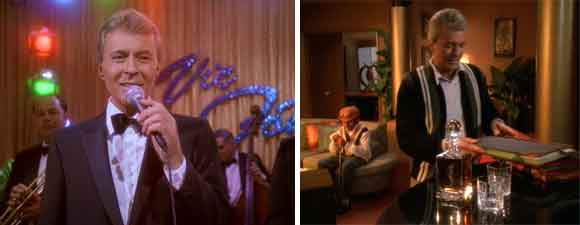
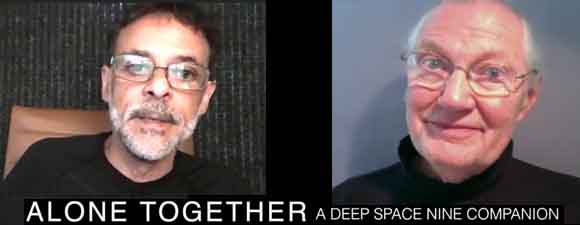

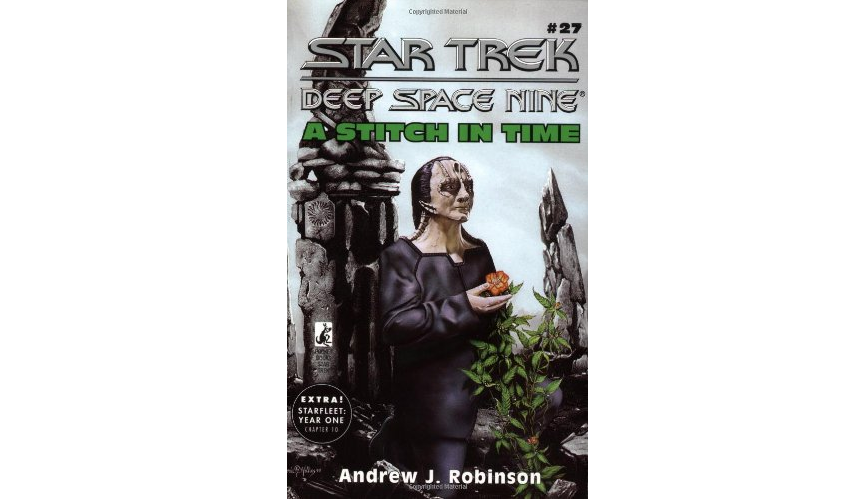
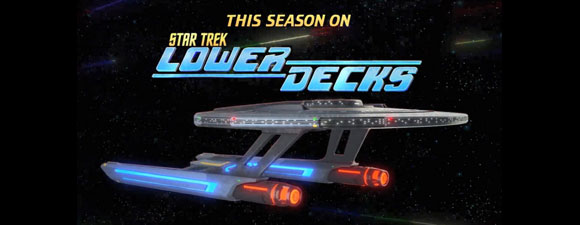

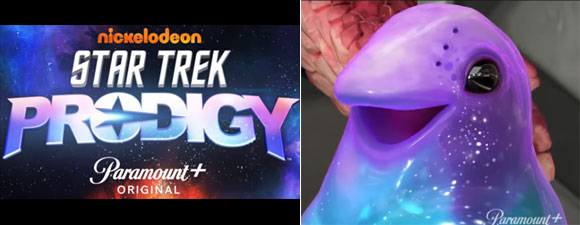
I completely agree on this one. “Children of Time”‘s moral dilemma was interesting, but it ignored far too many variables and in the end, I just couldn’t begin to agree with Sisko’s decision to deliberately crash his ship and condemn his crew to a life on this planet for the sake of what was, for them, only a POSSIBLE future. Do the lives of these colonists supersede those of the descendants the Defiant crew will have if they DO try, and succeed, to escape the planet? Why? Isn’t it all relative?
And if the answer is yes, and the crew is determined to preserve the colony, then why doesn’t Sisko turn the ship around after escaping the barrier the end of the episode and deliberately crash it into the planet anyway?
I hadn’t really considered the existence of an infinite number of alternate realities where all possibilities that can happen do happen. Now that I think of it, wouldn’t that render these kinds of moral dilemmas moot? Who is to say the quantum barrier was not a doorway to an alternate reality? On approach towards the planet, they have no clue of any kind of a civilization down there. Yet after leaving, a quick sensor scan reveals the inhabitants have now ceased to exist. Who is to say the alternate timelines extinguished in “City on the Edge of Forever”, “Yesterday’s Enterprise”, and “Past Tense” and the ones prevented in “Assignment: Earth” and “Time’s Arrow” didn’t still continue the exist. And for all we know, Daniels or Braxton did something to “correct” the timeline created Nero being thrown back in time, yet that it still continues to exist in the form of the two Abrams-verse movies so far.
“I hadn’t really considered the existence of an infinite number of
alternate realities where all possibilities that can happen do happen.
Now that I think of it, wouldn’t that render these kinds of moral
dilemmas moot?”
No. It means that there are no good and bad people, but only good and bad decisions, since all possible choices and outcomes are real, eventual, and occurring. If anything, this means our decisions are more important; we value the universe we are in and make a new one with every decision, and what could better highlight the need to make principled, ethical decisions?
The problem with this episode is the inconsistent ethics and the way the crew are swayed into irrationality by a herd instinct to be part of the pastoral community filled with smiling children.
This is another episode in which continuity issues occur after it aired:
**SPOILERS WARNING**
This episode aired before Section 31 was introduced in the following season and in the final season, it was learned that they engineered the morphogenic virus that nearly killed Odo, as he was originally infected in season 4. Bashir had difficulty finding the cure for him, only doing so when he and O’Brien were able to trap Sloan and probe his mind. If this had been a factor for “Children of Time”, Odo would have died long ago and wouldn’t have been around to prevent the Defiant from going back in time.
Damn, I never even thought of that. You’re right.
Interesting observation. The only explanation is that Odo shapeshifted much less, slowing the onset of symptoms, and the crash survivors eventually developed the cure themselves.
It’s a simple explanation, really. At the end of Season 4, Odo is turned human by the Founders. Thus, he’s no longer infected by the virus. But he’s turned back into a changeling by the baby changeling midway Season 5. The baby changeling was never infected by the virus to begin with. How does Odo then become infected again? Simple…in Season 6 he links multiple times with the Female Changeling who reinfects Odo. There’s no continuity issue. In “Children of Time”, Odo is free of the virus.
Unfortunately, this doesn’t quite work, because in “When It Rains,” Bashir identifies the date of Odo’s infection as when he was at Starfleet command during “Homefront.” So Odo must have had the disease the whole time, even as a human
Star Trek has NEVER treated the rules of time travel with any consistency, so the fact that this episode does not adhere to some to some imaginary “multiversal theory of divergence” (which is ludicrous anyway — it totally goes against the law of conservation of mass and energy) bothers me not one bit. I consider this episode a TREK classic — the fascinating future generation, the powerful ethical dilemma, the downbeat climax, and especially the long-awaited advancement in Odo and Kira’s relationship make it total winner in my book. So forgive me if I choose to accept the story on its own terms and not nitpick it for not being what it ISN’T instead of appreciating it for what it IS.